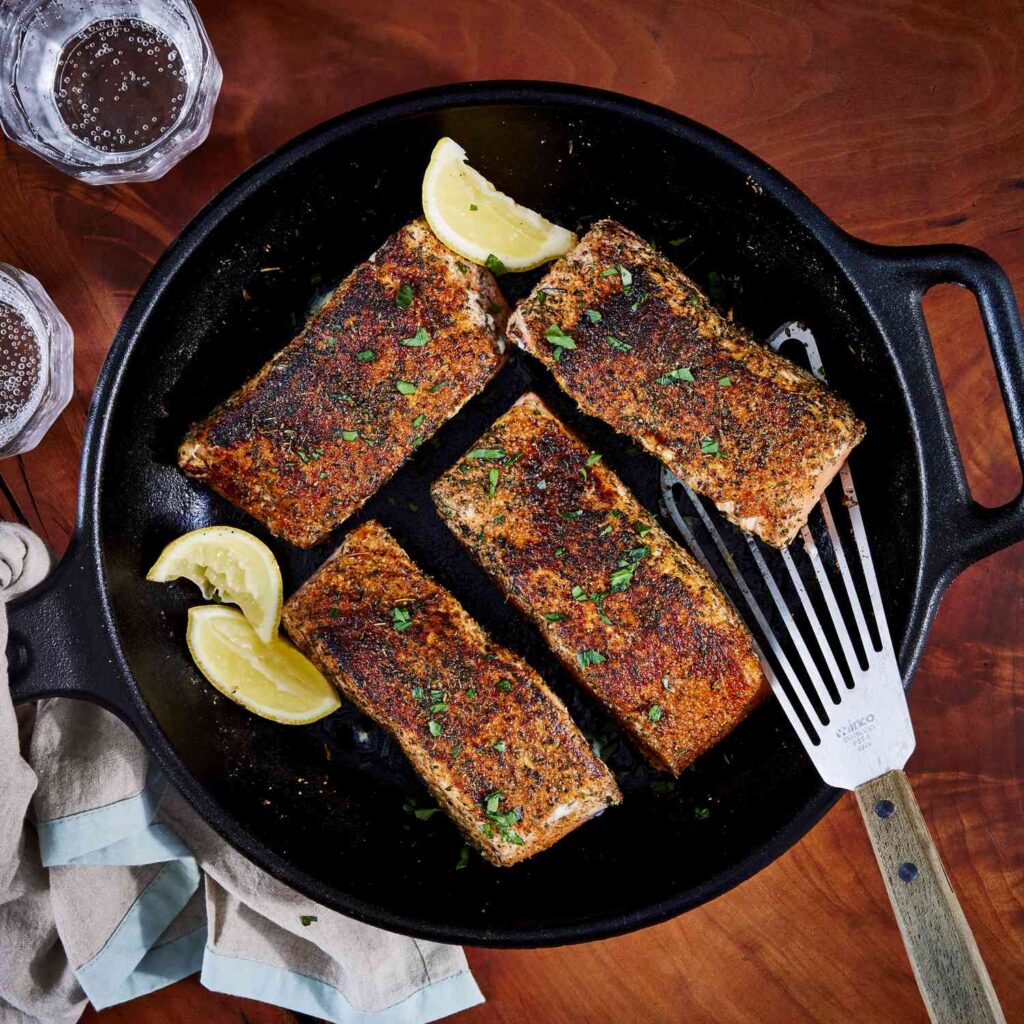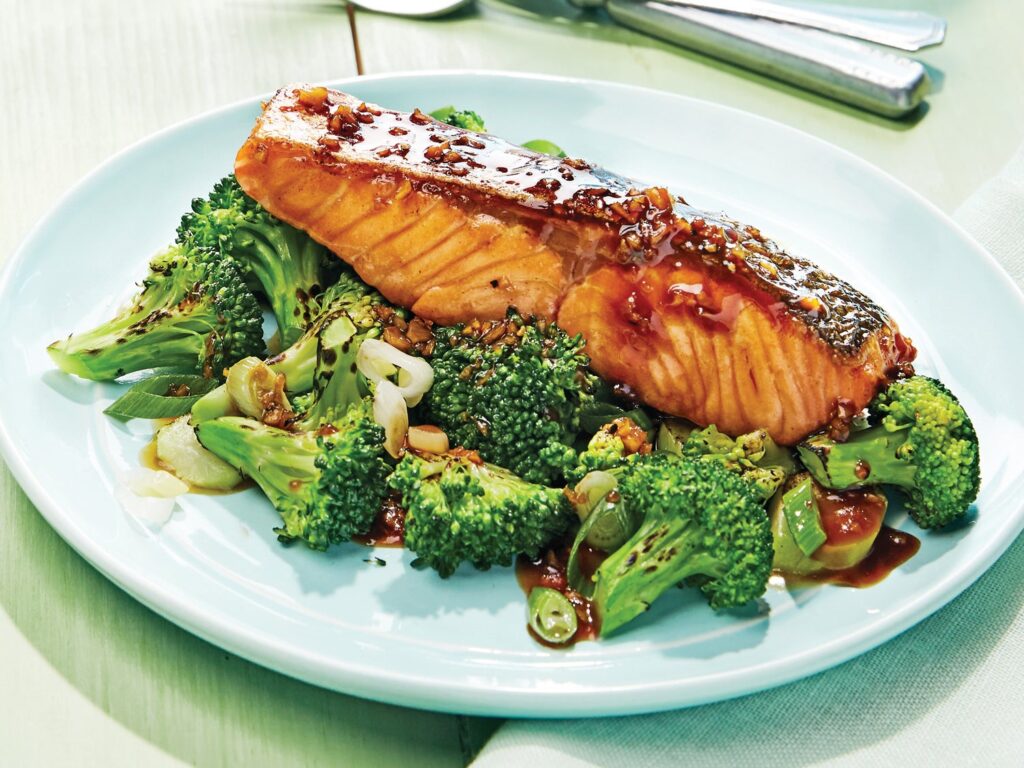Simple Guide on How to Cook Salmon on the Stove
This article provides a comprehensive guide on how to cook Salmon on the Stove, covering various preparation methods and seasoning techniques to help you achieve flaky, flavorful results every time.

Understanding Salmon and its Preparation
Salmon is a type of fish that’s highly valued for its flavorful flesh and nutritional benefits. It belongs to the Salmonidae family and is native to the Atlantic and Pacific Oceans. Salmon is known for its distinctive pink to orange flesh color, which comes from its diet rich in crustaceans like krill, containing pigments called carotenoids.
There are several species of salmon, with common ones including Atlantic salmon and various types of Pacific salmon like Chinook (King), Sockeye (Red), Coho (Silver), Pink (Humpback), and Chum (Keta) salmon. Each species has its own unique flavor, texture, and appearance.
Learn More Recipe: How to Cook Salmon in a Pan
Salmon is not only delicious but also highly nutritious. It’s an excellent source of high-quality protein, omega-3 fatty acids, vitamins (such as vitamin D and B vitamins), and minerals (like selenium and potassium). These nutrients are beneficial for heart health, brain function, and overall well-being.
Key Takeaways:
Nutritional Powerhouse: Salmon is an excellent source of high-quality protein, omega-3 fatty acids, vitamins (such as vitamin D and B vitamins), and minerals (like selenium and potassium), making it a highly nutritious food choice.
Versatility: Salmon can be prepared in various ways, including grilling, baking, broiling, poaching, smoking, and pan-searing. It can be served as fillets, steaks, or smoked slices, and it’s featured prominently in cuisines worldwide.
Distinctive Flavor: Salmon has a rich, fatty flavor with a slightly sweet undertone. The taste can vary depending on the species and how it’s prepared, but it’s generally prized for its delicious flavor profile.
Health Benefits: Regular consumption of salmon is associated with numerous health benefits, including supporting heart health, brain function, and overall well-being. Its omega-3 fatty acids are particularly beneficial for reducing inflammation and lowering the risk of chronic diseases.
Varieties: There are several species of salmon, including Atlantic salmon and various types of Pacific salmon such as Chinook (King), Sockeye (Red), Coho (Silver), Pink (Humpback), and Chum (Keta) salmon. Each species has its own unique flavor, texture, and appearance.
Freshness: When buying salmon, look for firm, moist flesh with a mild, ocean-like aroma. Avoid salmon with any signs of discoloration, sliminess, or strong fishy odor.
Cooking Tips: When cooking salmon, remember to pat the fillets dry, season them with salt and pepper, and cook them until they turn opaque and easily flake with a fork. Don’t overcook salmon to keep it moist and flavorful.
Ingredients:
. Salmon fillets
. Salt and pepper
. Olive oil or butter
. Lemon wedges (optional)
. Fresh herbs (such as dill or parsley) for garnish
Step-by-Step Cooking Instructions

Preparation: Pat the salmon fillets dry with paper towels to remove any excess moisture. Season both sides of the fillets with salt and pepper. If desired, you can also add some fresh herbs like dill or parsley for extra flavor.
Heat the Pan: Place a non-stick skillet or frying pan on the stove over medium-high heat. Allow the pan to heat up for a minute or two.
Add Oil or Butter: Once the pan is hot, add a small amount of olive oil or butter to the pan. Swirl the oil or melt the butter to coat the bottom of the pan evenly.
Cook the Salmon: Carefully place the seasoned salmon fillets in the pan, skin-side down if they have skin. Allow the salmon to cook without moving it for about 4-5 minutes. This will help the skin to crisp up.
Flip the Salmon: After 4-5 minutes, use a spatula to gently flip the salmon fillets over. If the skin sticks to the pan, it may need a bit more time to cook. Cook the salmon for another 3-4 minutes or until it reaches your desired level of doneness. The salmon should be opaque and easily flake with a fork.
Optional: While the salmon is cooking, you can add lemon slices to the pan to infuse the fish with citrus flavor.
Serve: Once cooked, carefully remove the salmon from the pan and transfer it to a serving plate. You can garnish with fresh herbs and additional lemon slices if desired. Serve hot and enjoy!

That’s it! Cooking salmon on the stove is really that simple. Just be sure not to overcook it to keep it moist and flavorful.
Learn More Recipe: How To Cook Salmon in Air Fryer
FAQ
What’s the best type of salmon to cook on the stove?
Any type of salmon works well for stove-top cooking. Popular choices include Atlantic salmon, Chinook (King) salmon, Sockeye (Red) salmon, Coho (Silver) salmon, and others.
Should I leave the skin on the salmon when cooking on the stove?
Leaving the skin on can help protect the delicate flesh of the salmon and adds flavor. Plus, it can get crispy when cooked, which many people enjoy. However, it’s ultimately a matter of personal preference.
How do I know when the salmon is cooked through?
Salmon is cooked through when it turns opaque and easily flakes with a fork. You can also use a meat thermometer to ensure it reaches an internal temperature of 145°F (63°C).
Do I need to flip the salmon when cooking on the stove?
I generally recommend flipping the salmon halfway through cooking to ensure even cooking on both sides. This helps to develop a nice crust on each side and ensures that the salmon cooks through evenly.
Can I add other ingredients to the pan while cooking the salmon?
Yes, you can add various ingredients to the pan to enhance the flavor of the salmon, such as lemon slices, garlic, herbs, or even vegetables like asparagus or cherry tomatoes.
Should I cover the pan while cooking salmon on the stove?
It’s usually not necessary to cover the pan when cooking salmon on the stove. Leaving it uncovered allows the moisture to evaporate, helping to achieve a crispy exterior while keeping the interior tender.
How long does it take to cook salmon on the stove?
Cooking times can vary depending on the thickness of the salmon fillets and the desired level of doneness. As a general guideline, cook the salmon for about 4-5 minutes per side over medium-high heat, flipping halfway through.
Learn More Recipe: How To Cook Tuna Steak
[…] Learn More Recipe: How to Cook Salmon on the Stove […]